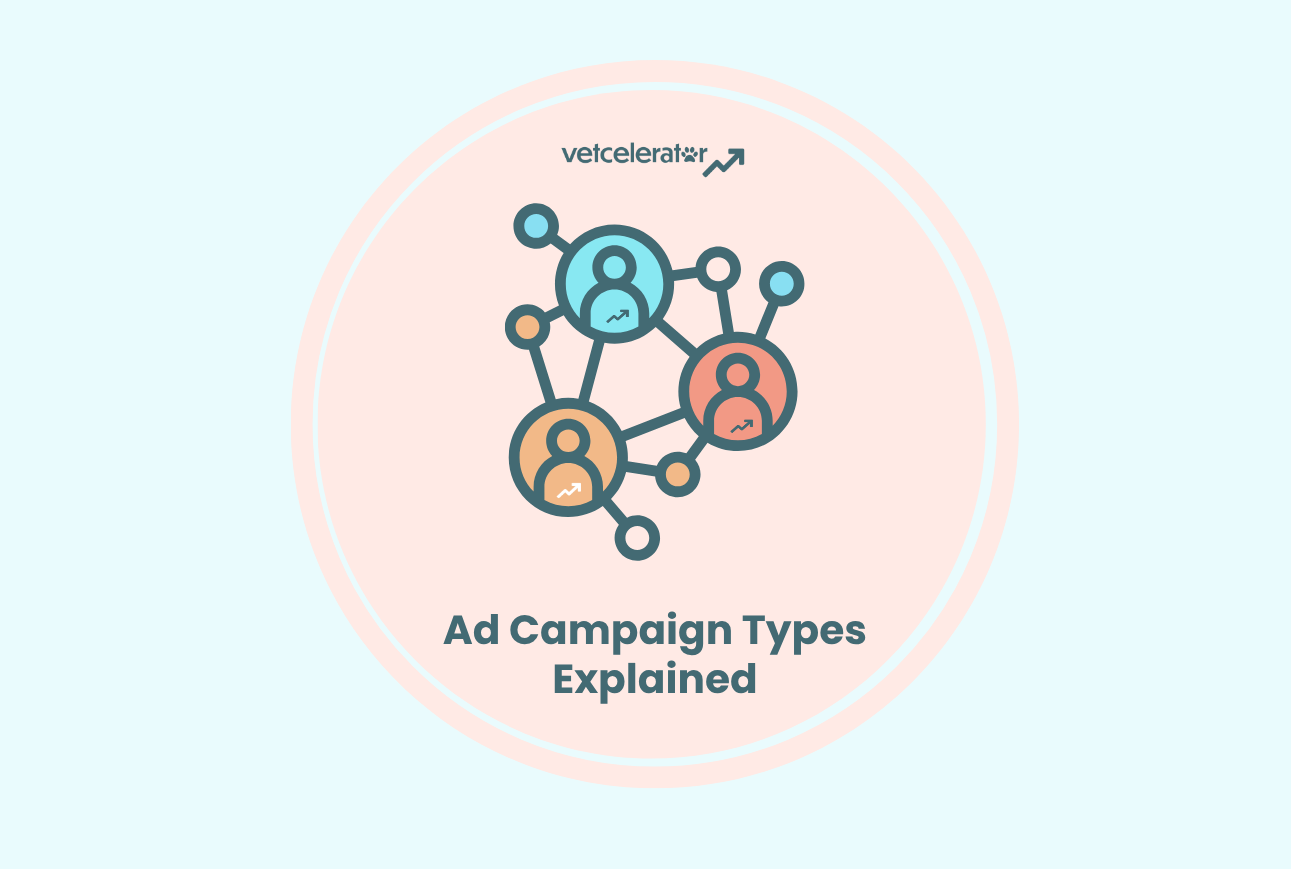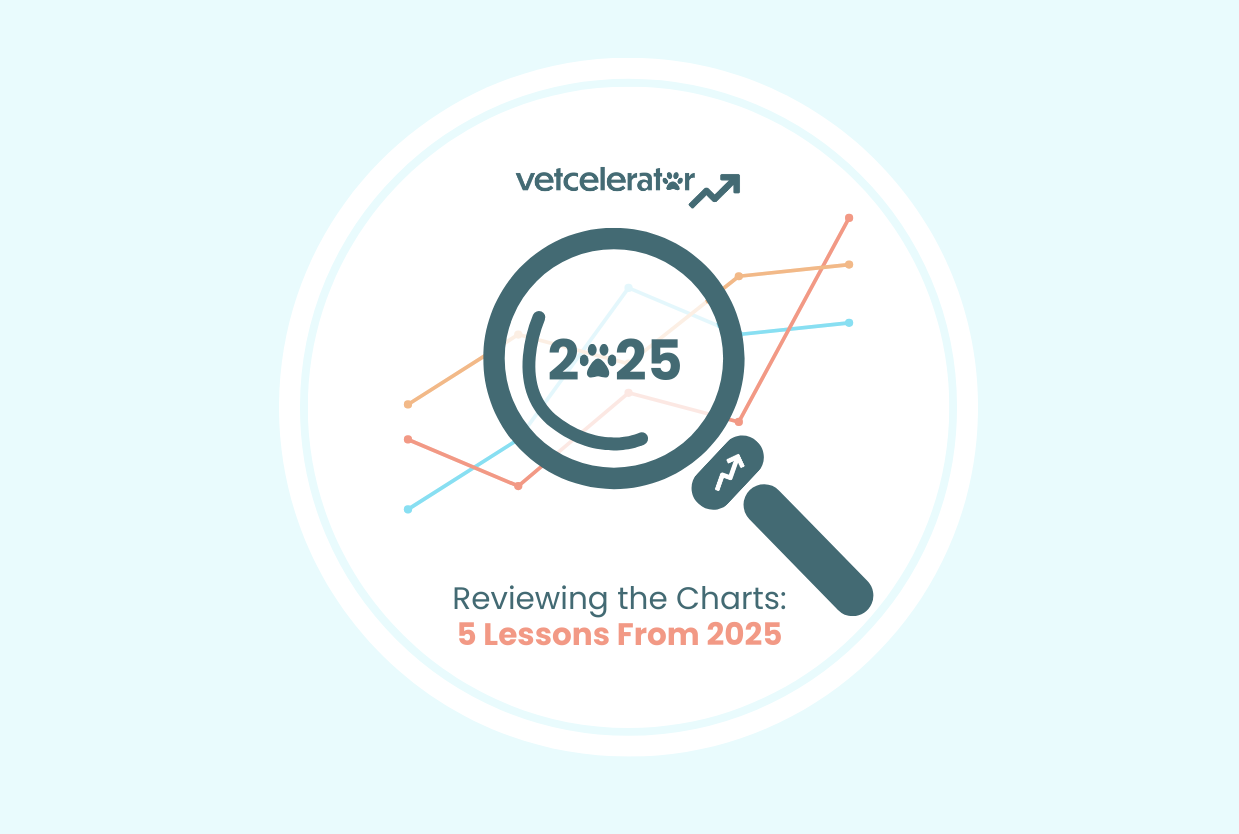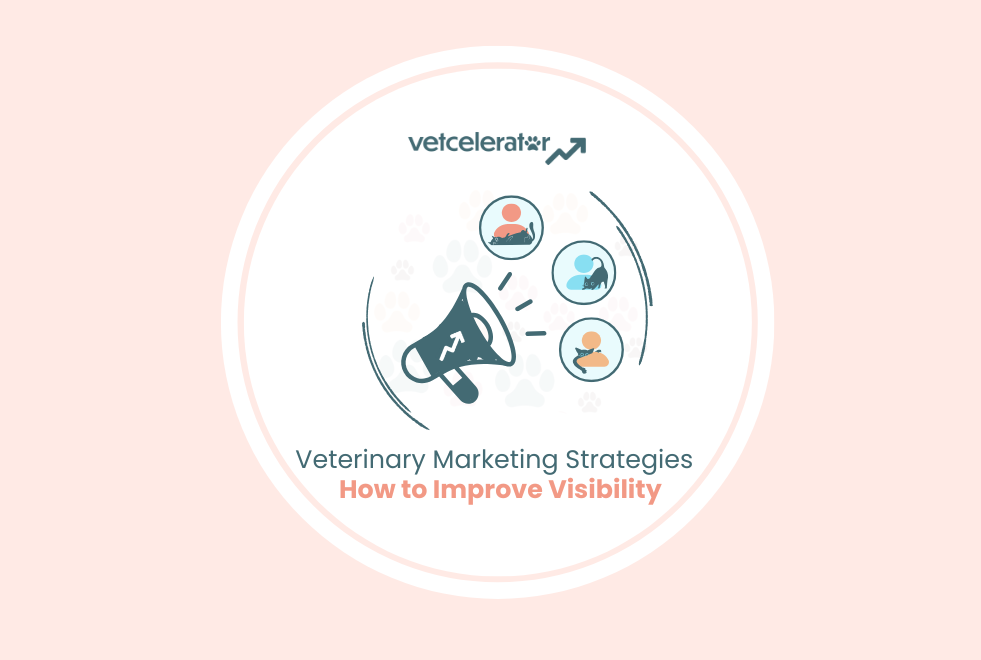
Veterinary ad campaigns are no longer optional, they’re a growth driver. When clinics struggle with empty appointment slots despite strong reputations, the issue isn’t quality of care. It’s visibility.
At Vetcelerator, we believe every business problem is a marketing problem. Our mission is founded on the premise that effective marketing, informed by data and strategy, can address operational, financial, and growth challenges across veterinary practices.
That’s why we deploy marketing professionals who understand the veterinary industry, not just in theory, but in the metrics that matter and the platforms that perform.
This blog series breaks down the core components of digital advertising for veterinary clinics. From defining goals to understanding ad platforms and interpreting data, our objective is to equip you with the clarity to make informed marketing decisions.
Here’s what’s ahead:
- Measurement That Matters: Tracking Conversions in Veterinary Marketing
- How First-Party Data Enhances Audience Insights for Veterinary Clinics
- Digital Advertising for Veterinary Clinics: Ad Campaign Types Explained
- How Much Should My Veterinary Clinic’s Advertising Budget Be
- Impression Share: What It Is and Why It Matters for Veterinary Clinics
- Veterinary Advertising Metrics Explained
Why Veterinary Ad Campaigns Matter
Veterinary clinics often face the same growth challenge: having strong clinical teams, a positive reputation, and empty slots on the schedule. Traditional advertising can’t keep up with how people search for care. Digital ad campaigns solve that by targeting pet owners at the exact moment they’re looking for a provider.
The right ad strategy turns your budget into booked appointments. The key is knowing:
- Which campaign types drive action
- When to run them
- How to align each with your goals
Veterinary Ad Campaign Types — Explained
1. Search Campaigns – High-Intent, High-Return
Search ads put your clinic in front of pet owners who are actively searching for services like “vet near me” or “dog vaccination [city].” These campaigns are built for action and designed to convert.
Best For:
- Booking appointments fast
- Targeting high-intent searches
- Promoting services like dental cleanings, wellness visits, and urgent care
Key Strategy:
Use high-intent keywords like:
- “emergency vet [city]”
- “spay and neuter clinic [zip code]”
- “affordable vaccinations for cats”
Don’t Waste Clicks:
Include negative keywords like “DIY,” “free,” or “home remedy” to filter out non-buyers.
2. Performance Max (PMax) Campaigns – Broad Reach, Smart Targeting
PMax uses Google’s AI to serve your ads across its entire network—Search, Display, Maps, Gmail, YouTube, and more. It learns from behavior patterns and adjusts ads dynamically.
Best For:
- Clinics looking to build awareness and re-engage pet owners
- Lower-cost conversions like call clicks and directions
- Increasing brand visibility across multiple platforms
Key Strategy:
Use audience signals like:
- “Pet owners browsing pet care content”
- “Users searching for pet insurance”
- “People near your clinic who own pets”
Pair with creative assets: clinic photos, short videos, clear CTAs like “Book Now” or “New Client Discount.”
3. Social Campaigns – Connection and Community
Social platforms like Facebook and Instagram offer a space to build your brand, share updates, and connect with pet owners before they need you. These ads increase familiarity and trust.
Best For:
- Raising local awareness
- Promoting seasonal offers or new services
- Staying top-of-mind for future bookings
Key Strategy:
Keep ads local, visual, and conversational. Think promotions, cute patient photos, team spotlights, and community news.
How to Combine Campaign Types for Maximum Impact
The strongest ad strategies use a mix of Search, PMax, and Social, each targeting different points in the client journey.
Here’s a simple $5,000/month split that many clinics use:
- Search Ads — $2,000
High-intent traffic, ready to book - PMax Campaigns — $1,500
Broader visibility at lower CPC - Social Ads — $1,500
Build trust, re-engage, promote offers
New clinics might shift more toward Social and PMax to build awareness. Established clinics often lead with Search to drive bookings. The right mix depends on your goals, and Vetcelerator builds that strategy for you.
Don’t DIY Your Ad Strategy
Digital campaigns aren’t a set-it-and-forget-it project. Each campaign type requires precision: correct setup, strong creative, audience targeting, daily optimization, and performance reporting.
Our team runs veterinary ad campaigns every day. We know what drives ROAS, how to avoid wasted spend, and how to keep your clinic ahead in a competitive market.
Let’s Build a Veterinary Ad Campaign That Works
Vetcelerator delivers ad campaigns that align with your growth goals. Whether that’s filling schedules, launching new services, or expanding your client base. We don’t just manage ads. We manage outcomes.
Ready to make your ad spend drive results?
Let Vetcelerator manage your veterinary ad campaigns and help you attract more pet owners in your area.
👉 Schedule Your Free Strategy Call




